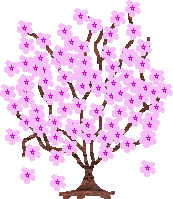
Whereas in China the cherry blossom symbolizes feminine beauty, the feminine principle, or love, in Japan the cherry blossoms are believed to exemplify the transient nature of life, because of their short blooming times. Cherry blossoms are an enduring metaphor for the ephemeral nature of life, an aspect of Japanese cultural tradition that is often associated with Buddhistic influence, and which is embodied in the concept of mono no aware. The association of the Sakura with mono no aware dates back to 18th-century scholar Motoori Norinaga. The transience of the blossoms, the extreme beauty and quick death, has often been associated with mortality; for this reason, Sakura are richly symbolic, and have been utilized often in Japanese art, manga, anime, and film, as well as at musical performances for ambient effect. The band Kagrra, which is associated with the visual kei movement, is an example of this latter phenomenon. There is at least one popular folk song, originally meant for the Shakuhachi (Bamboo flute), titled "Sakura", and several pop songs. The flower is also represented on all manner of consumer goods in Japan, including Kimono, stationery, and dishware.
At Himeji Castle during World War II, the Sakura was used to motivate and manipulate the Japanese people, to stoke nationalism and militarism among the populace. Japanese pilots would paint them on the sides of their planes before embarking on a suicide mission, or even take branches of the trees with them on their missions. A herry blossom painted on the side of the bomber symbolized the intensity and ephemerality of life; in this way, the aesthetic association was altered such that falling cherry petals came to represent the sacrifice of youth in suicide missions to honor the emperor. The government even encouraged the people to believe that the souls of downed warriors were reincarnated in the blossoms.
In its colonial enterprises, imperial Japan often planted cherry trees as a means of "claiming occupied territory as Japanese space". For this reason, the symbolic import of the cherry trees is quite different in Korea, where the trees at Seoul's Gyeongbok Palace were cut down to celebrate the fiftieth anniversary of liberation from Japanese colonial rule. Some cherry trees remain in Korea, although they are conceptualized not as the embodiment of transience, as in Japan, but rather as "blossom[ing] continuously like the Koreans".